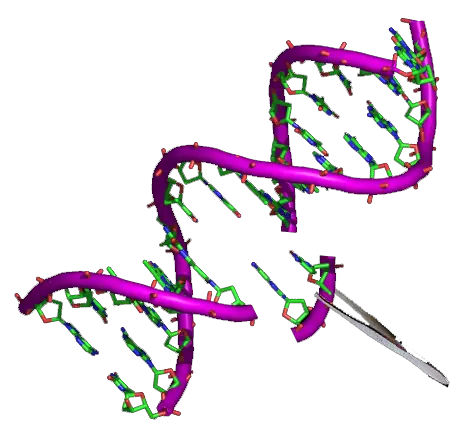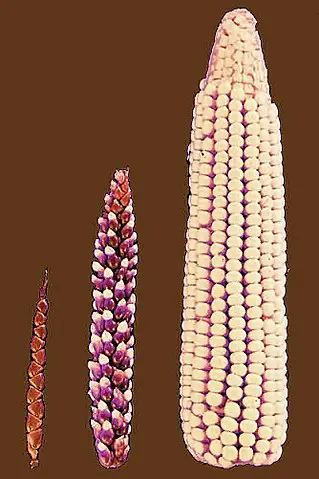People have been altering plants and animals for many years by using selective breeding, artificial insemination, cross-pollination, and creating hybrid plants by grafting. However, genetic engineering or genetic modification alters the DNA of an organism and changes the characteristics.
Scientists developed a way to isolate and cut up DNA material from different biological species and create a hybrid DNA that would be introduced to an organism to form new combinations of DNA. This achievement to alter the DNA of an organism begged the question of the risks of genetic engineering.
In 1974, a meeting was held in California to discuss the social implications of genetic engineering and genetically modified organisms (GMOs). Some companies involved in the conference recognized the potential of biotechnology. One of the first private companies to use genetic engineering was a company called Genentech Inc. that developed the production of human insulin in bacteria and has provided a constant supply of insulin for diabetics worldwide.

Examples of Genetic Engineering and GMOs
Cloning: This is producing an identical copy of an organism. The first cloned sheep was Dolly in 1996. The ethics of cloning is a major debate among scientists and the public.
Pesticide-resistant plants: Crop seeds were developed to be resistant to certain pesticides so that when crops were sprayed it did not affect the growing crop. An example of this is rapeseed crops.
Cows & Pigs: To reduce the amount of methane gas cows produced, some cows were genetically modified so that they had less flatulence. Pigs were genetically modified so that they digested phosphorous better and reduced the amount of manure produced by the animal.
Poplar trees: Scientists at the University of Washington developed poplar trees that could be nourished by polluted water.
GMO Rice: Genetic modification was used to add beta-carotene to rice to give people a healthy amount of vitamin A.
Fast growing trees: To keep up with the demand for wood and wood products, GMO trees could be planted as part of a reforestation program and they matured faster.

GMO Tomatoes and other fruits: Varieties of fruit were modified to grow faster, produce more, and remain fresher longer. This allows these GMO fruits to be shipped farther from where they are grown.
GMO Corn: A type of corn was genetically modified to produce its own poison to kill insects.
GMO Salmon: A modification was developed to allow farmed salmon to grow twice as fast as native salmon.
GMO Bananas: A species of banana was developed that produced cholera and hepatitis vaccine. When these bananas are eaten by people their bodies produce antibodies so they are immune to the diseases.

Disadvantages of Genetic Engineering
Not everything is known about the long-term effects of consuming GMOs on human health. There is also an issue about ethics – just because science has proven the process of genetic engineering works doesn’t mean using that knowledge is morally right. Many people believe that genetically modifying plants and animals is against the laws of nature. Manipulating the DNA of organisms could eventually change genetic diversity which is an essential component of any ecosystem. This could lead to certain organisms (natural plants and animals) to become extinct.
Questions:
- What is selective breeding?
- What is a GMO?
- What are two examples of a genetically engineered crop?
- What is the basis of the debate over genetically engineered products?
- How can genetic engineering cause some plants and animal species to disappear?
Answers:
- People can choose the characteristics of the offspring of animals and will breed only those animals that display those characteristics.
- A GMO is an organism that has been genetically modified or altered.
- Rapeseed was genetically engineered to resist the effects of pesticides and rice was genetically engineered to have beta-carotene in its DNA.
- Some people believe that it is against the laws of nature to fiddle with the DNA of plants and animals.
- If genetically engineering is applied to all plants and animals there will eventually be less diversity and natural plants and animals will become extinct.